The medieval castle of Fenis
2020
The castle of Fénis, located in the municipality of the same name, is one of the most famous medieval manors in the Aosta Valley. Known for its scenic architecture, with the double crenellated walls that enclose the central building and the numerous towers, the castle is one of the major tourist attractions in the Valley and one of the best preserved medieval castles in Italy.
You may also like

2020
Aosta. The Stone Bridge
The stone bridge (in French, pont de pierre) is a Roman monument of the city of Aosta, located about one hundred and fifty meters east of the Arch of Augustus. It was built at the time of the foundation of the Roman city of Augusta Praetoria to allow the passage from one bank to the other of the Buthier stream.

2020
La Thuile. (Aosta). Dora river of Verney
The Dora di Verney (Doire du Verney in French) is a stream that flows into the Vallone di La Thuile, in the Aosta Valley, a right tributary of the Dora Baltea. La Dora di Verney was born at the head of the Breuil Valley, near the Piccolo San Bernardo pass. After receiving the contribution of some minor streams and of Lake Verney, within the town of La Thuile it receives the waters of the Dora di Rutor, thus forming the Dora di La Thuile, which descends towards Pré-Saint-Didier to throw in the Dora Baltea. The Dora di La Thuile basin at the confluence of Dora di Verney and Rutor includes the glacial surfaces and the snowfields of Rutor, Vallone di Breuil, Chavannes and Orgères and also receives the waters of the Rutor and Bellecombe (2378 m) and Lake Verney (2088 m), among the largest natural lakes in the Aosta Valley.
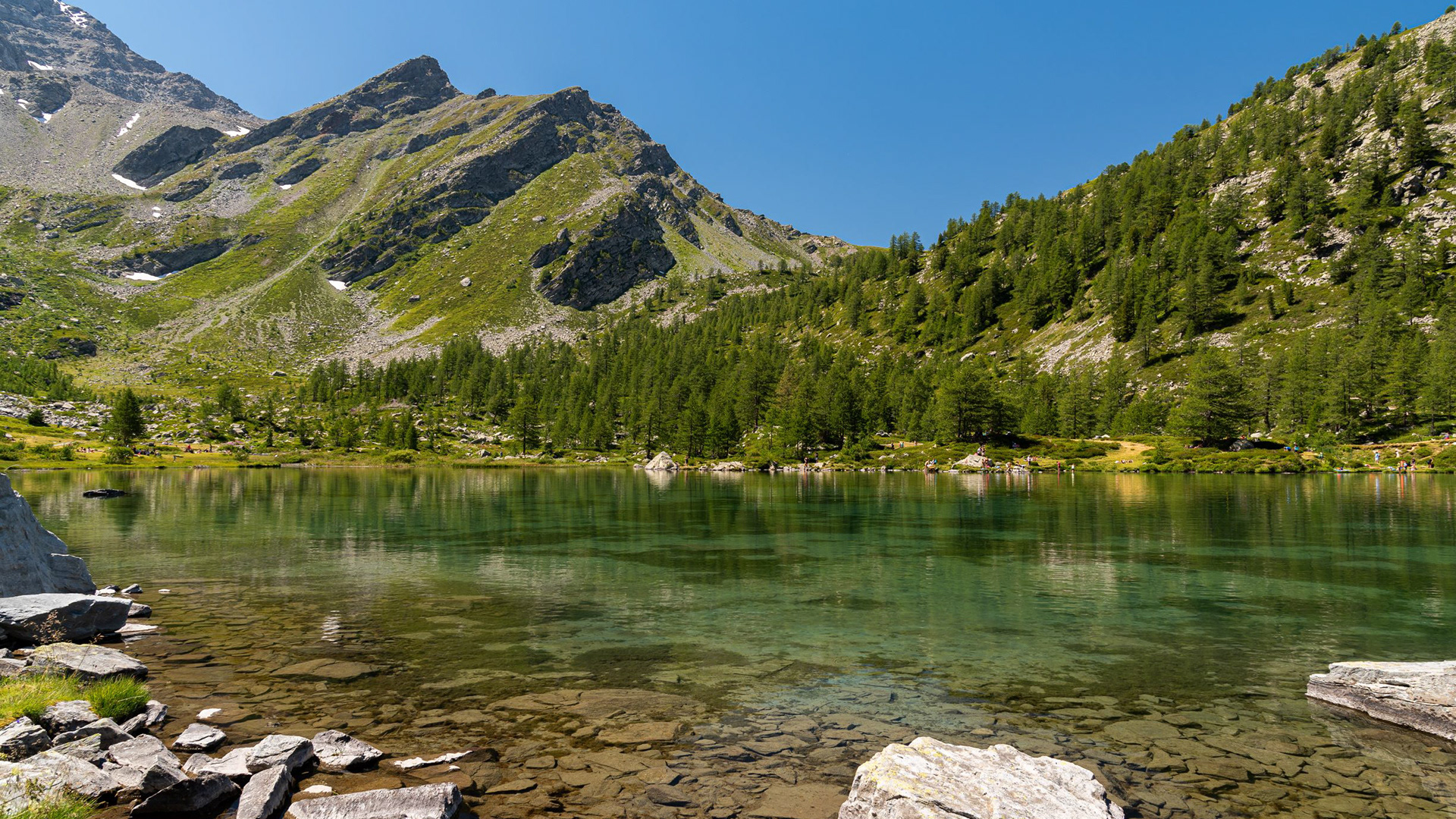
2020
The wonderful Arpy Lake
Not too far from Colle San Carlo, and more precisely in the Arpy valley within the municipal area of Morgex (Aosta), is the wonderful Lake Arpy, a glacial water mirror set in a beautiful alpine setting. Starting from Colle San Carlo which is located just 6 kilometers from La Thuile, Lake Arpy can be reached via a path that crosses the woods in just 45 minutes. Here, at 2,066 meters above sea level, in a splendid basin enclosed between Mount Charvel and Becca Poignenta to the left of Mount Colmet, is this fascinating body of water. The lake is fed by the emissary of the Pietra Rossa lake. Walking around the lake you can admire the spectacle offered by the Grandes Jorasses, peaks that are part of the Mont Blanc chain. On its right you can instead see the Monte della Croce from whose top, among other things, you can enjoy a beautiful view of La Thuile.
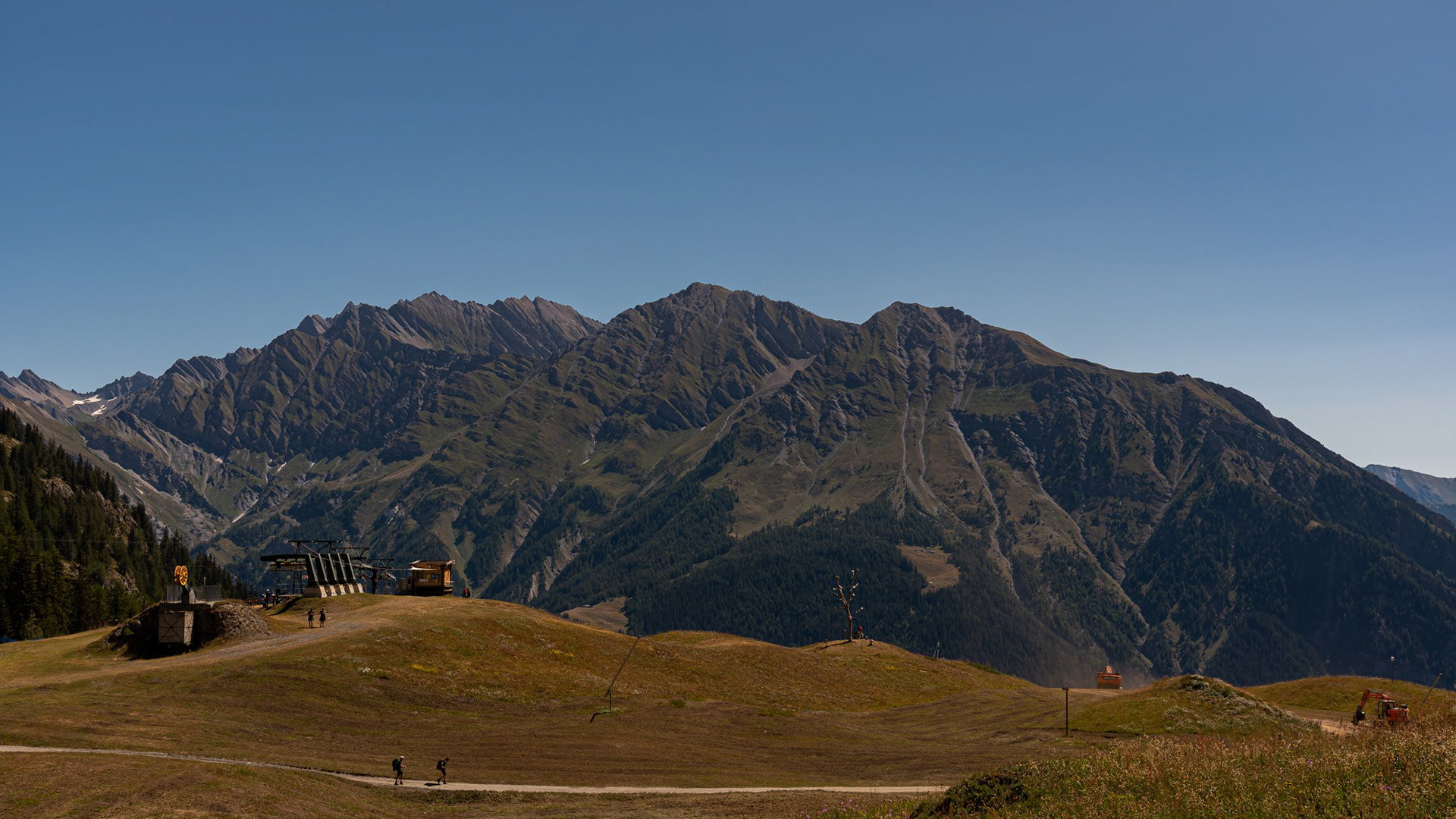
2020
Mountain views

2020
Aosta. The Cathedral
The Cathedral of Santa Maria Assunta and San Giovanni Battista (in French: Cathédrale Notre-Dame de l'Assomption et Saint-Jean Baptiste) is the main place of worship in the city of Aosta, the bishop's seat of the diocese of the same name; it constitutes, together with the Collegiate Church of Sant'Orso, the most important testimony of the history of sacred art in the Aosta Valley. Its ultra-millennial history must be reconstructed through the multiplicity of interventions that have followed one another and the architectural languages used, in addition to the artistic testimonies that it preserves.
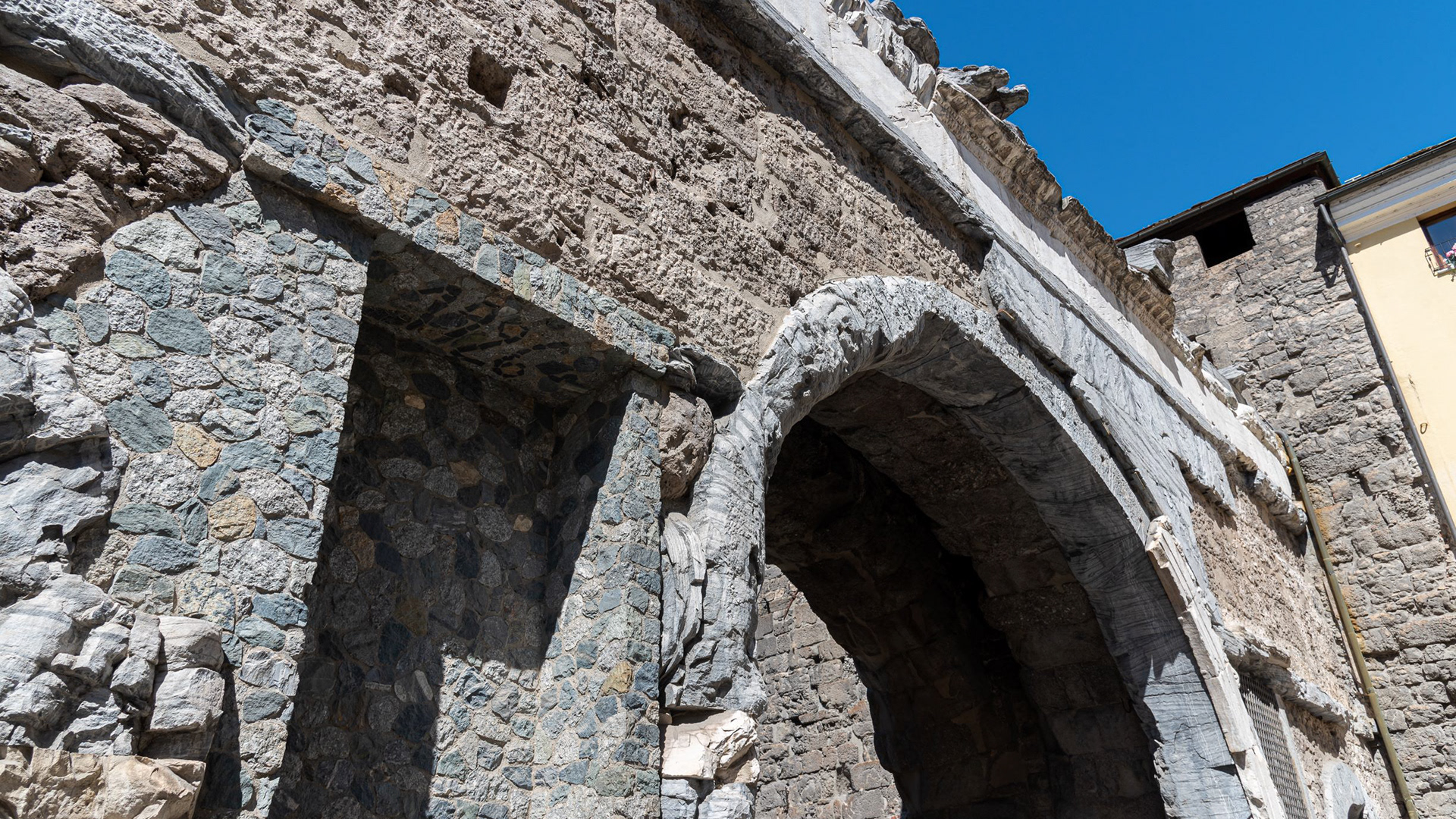
2020
Aosta. The Porta Pretoria
The Porta Pretoria or Porta pretoriana (in Latin Porta Prætoria, in French, Porte (s) prétorienne (s)) is the eastern gateway to the Roman city of Augusta Prætoria Salassorum (today Aosta)
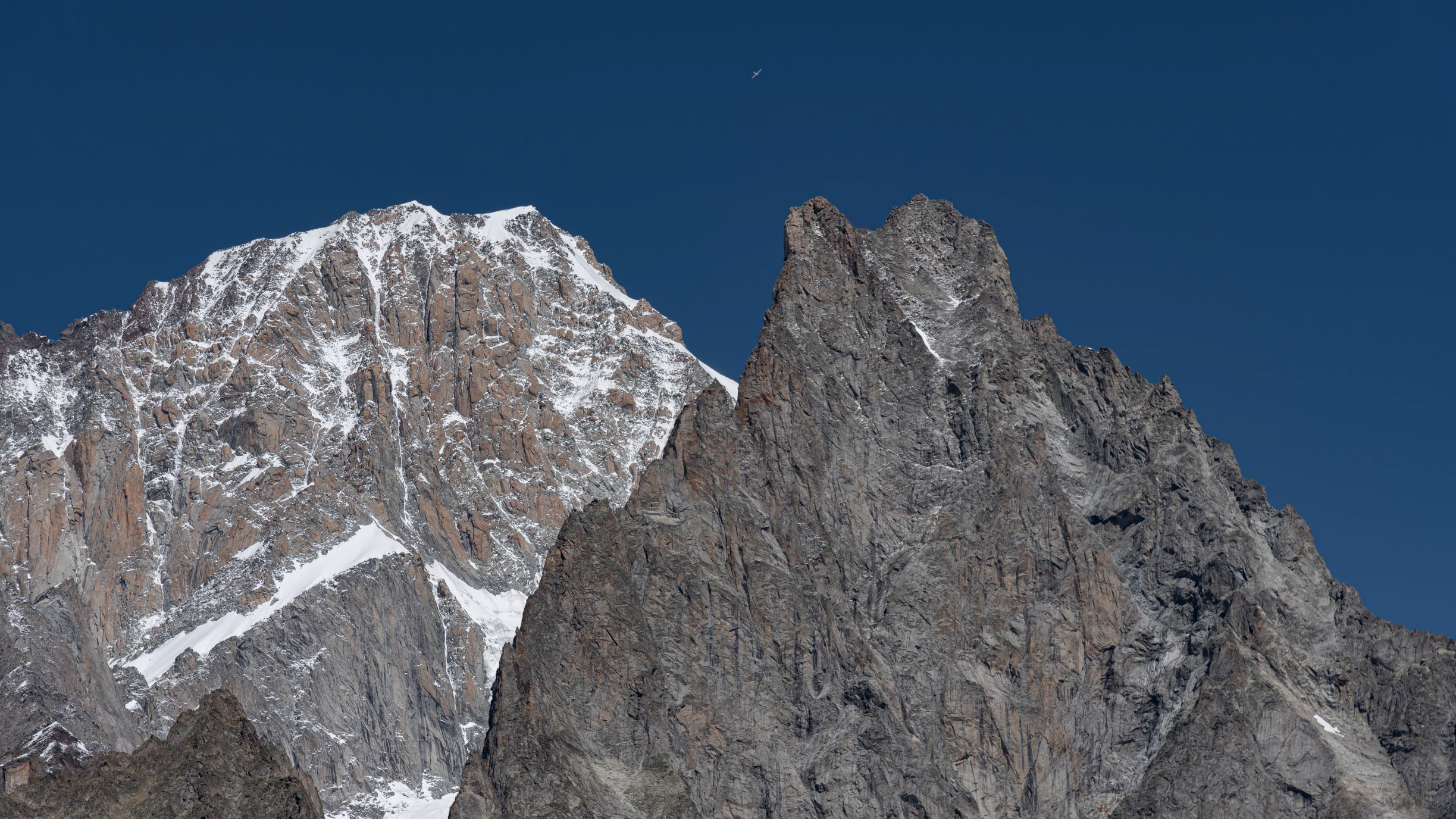
2020
Mont Blanc Massif
The Mont Blanc Massif is a mountainous massif belonging to the Mont Blanc Alps (Alpi Graie) which affects the Aosta Valley (Italy) and Haute Savoie (France) and which includes the summit of Mont Blanc and numerous other peaks. The definition of "Mont Blanc Massif" is not always consistent between the various Alpine classifications. They range from a broader definition, which coincides with the definition of the Mont Blanc Alps, to a more restrictive one. Following the SOIUSA, which adopts a more restrictive choice, the Mont Blanc massif is defined as the part of the Mont Blanc Alps deprived of the Trélatête Massif to the south-west and the Dolent-Argentière-Trient Massif to the north-east. With this definition, the massif goes from Col de Miage (3,356 m) to Colle del Monte Dolent (3,485 m).
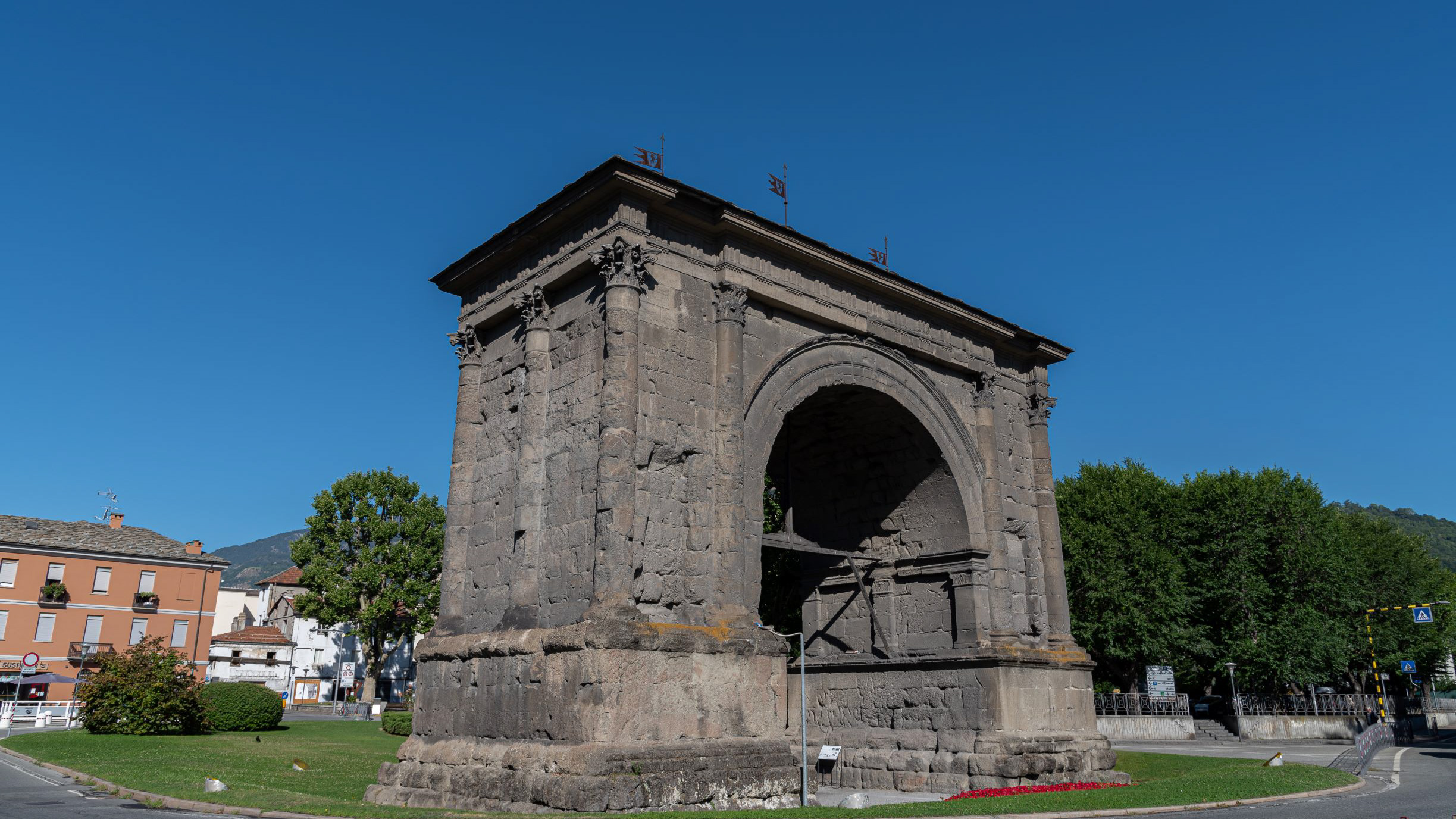
2020
Aosta. Arch of Augustus
It was built in 25 BC. on the occasion of the Roman victory over the Salassi by Aulo Terenzio Varrone Murena. It is on the axis with the decumanus maximus, not far from the Bourg Saint-Ours (district of the Collegiate Church of Sant'Orso) and from the eastern entrance of the city walls (the Porta Prætoria).
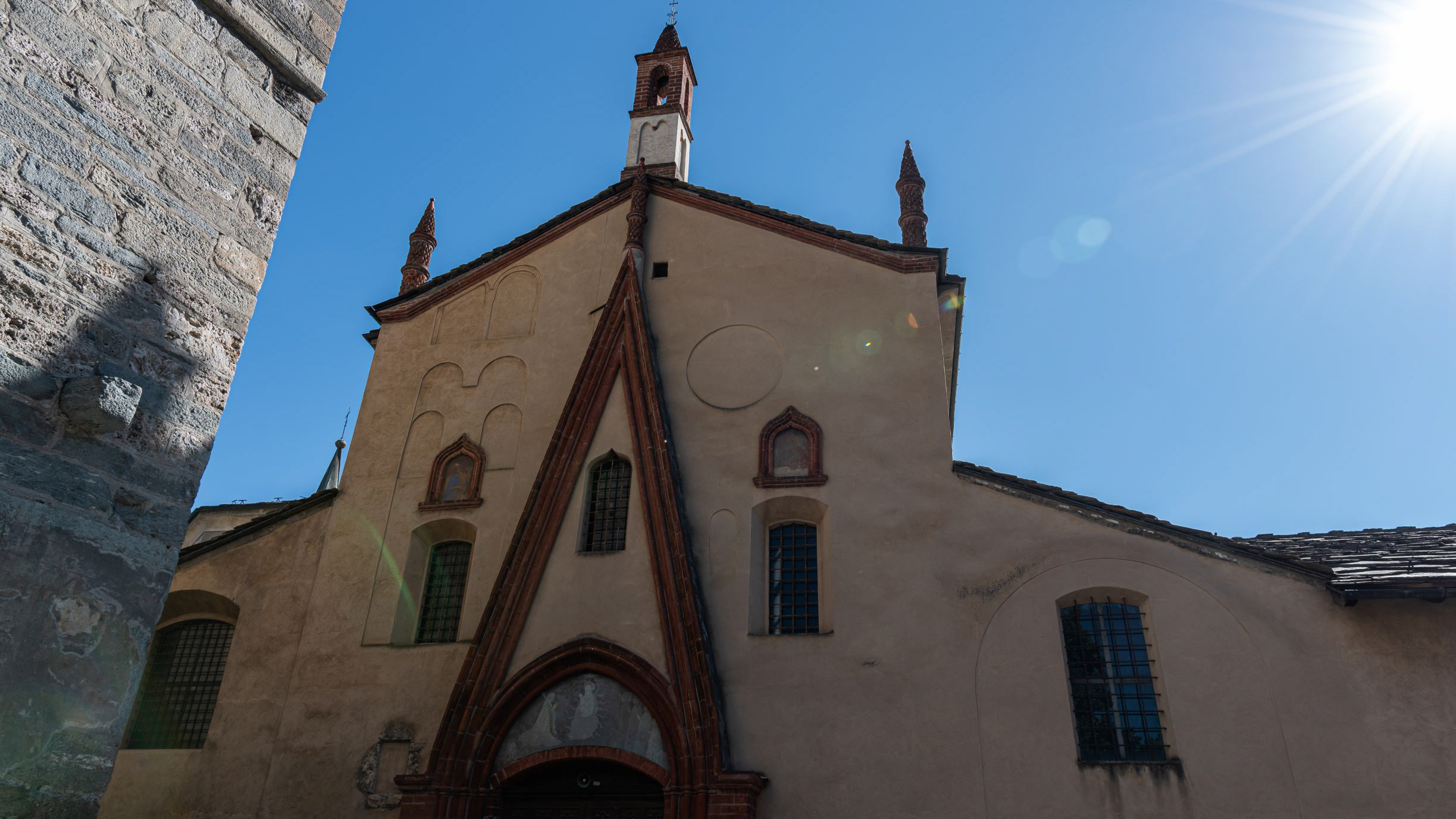
2020
Aosta. Collegiate Church of the SS. Pietro and Orso
The collegiate church of Santi Pietro e Orso (in French, Collégiale des Saints Pierre et Ours) is a religious building in Aosta, in northern Italy. Together with the Cathedral of Aosta, it constitutes the most important testimony of the history of sacred art in the Aosta Valley. Of particular interest are the ancient Ottonian frescoes preserved between the roof and the cover of the central nave, and the cloister with its medieval capitals.
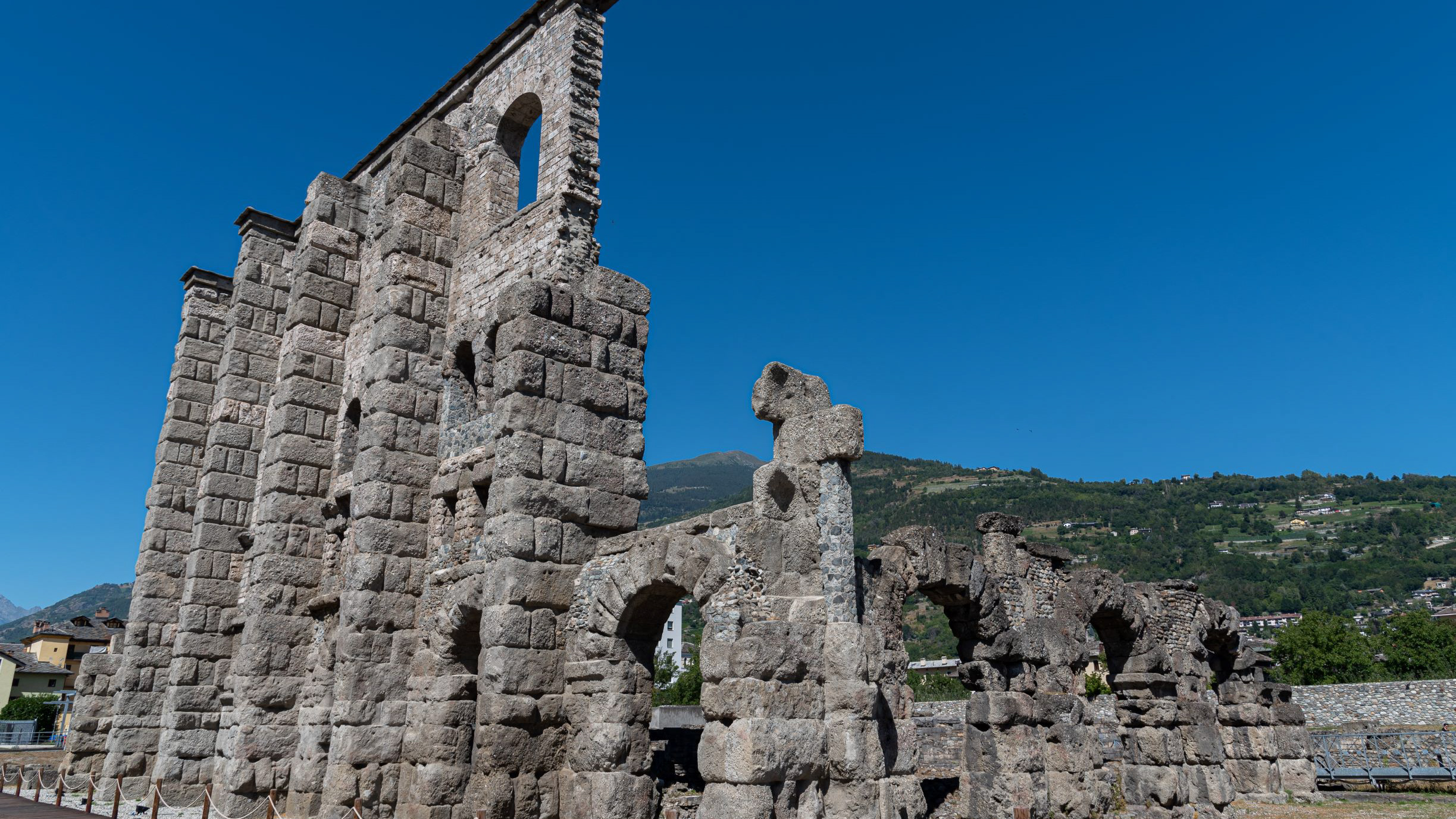
2020
Aosta. The Roman Theater
The only currently visible facade is the southern one, 22 meters high, characterized by a series of buttresses and arches and lightened by three superimposed orders of windows of various shapes and sizes. Also clearly identifiable are the hemicycle tiers that housed the spectators (cavea), the orchestra (whose radius is 10 meters), and the stage wall (now reduced to just the foundations) that once stood with its rich facade. decorated with columns, marble and statues. It has been calculated that the theater could hold three or four thousand spectators. Some scholars believe that the theater was equipped with a fixed roof. With the fall of the empire, until the eighteenth century. all memory of the original function of the building was lost and its remains were not recognized as such until very late: during the Middle Ages numerous buildings were built against it, demolished during the modern recovery and restoration works. In 1864 some excavations brought to light a series of walls, while in the 20s of the twentieth century an initial arrangement was made to the monument, demolishing the huts that surrounded it. However, the complete illumination took place between 1933 and 1941, when important restoration and integration works were carried out. The latest research carried out on the walls has allowed us to hypothesize that the currently visible structures were not all born in the first phase (1st century BC), but that they are the result of subsequent modifications that still occurred in ancient times.
